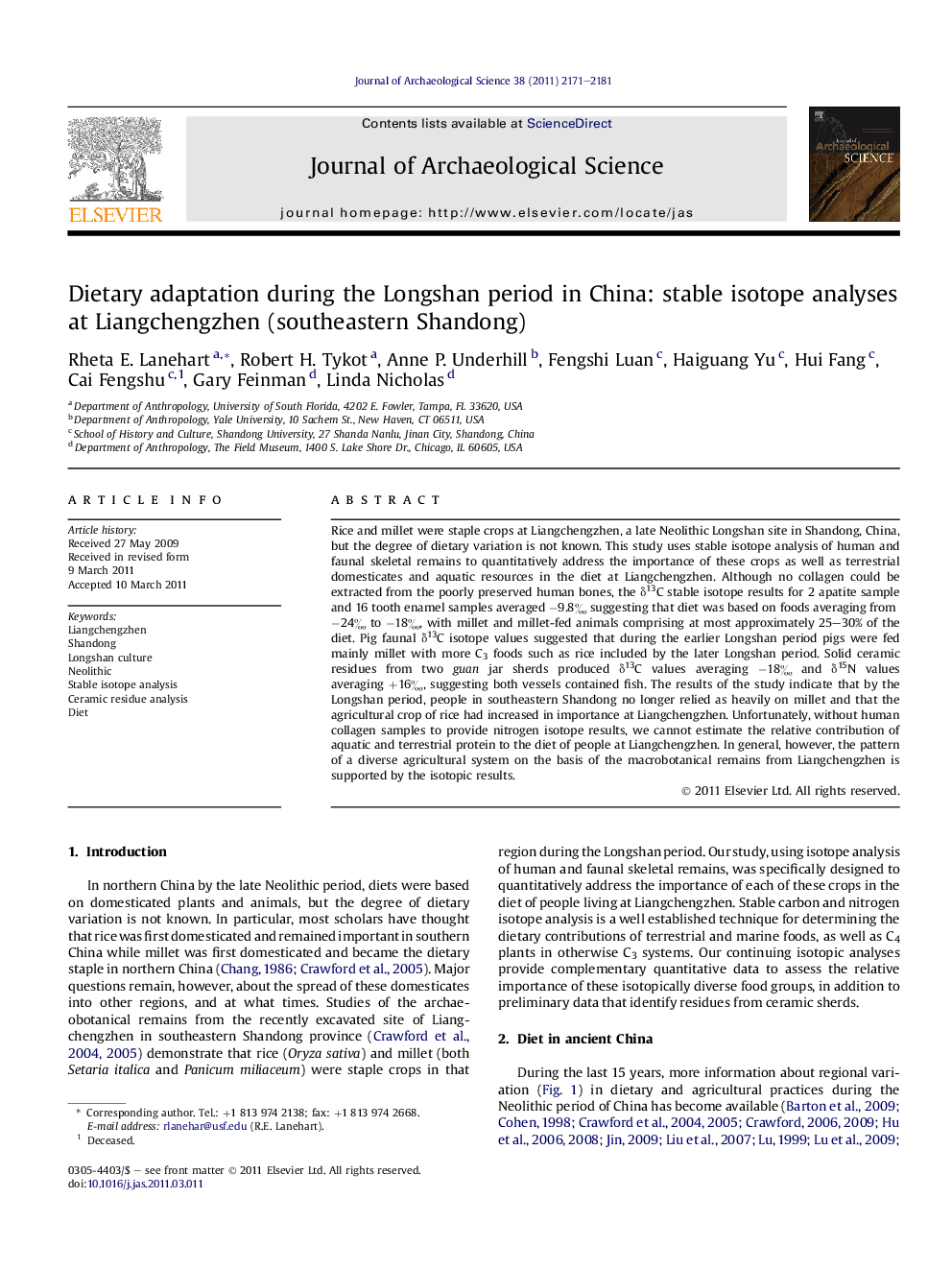| کد مقاله | کد نشریه | سال انتشار | مقاله انگلیسی | نسخه تمام متن |
|---|---|---|---|---|
| 1036321 | 943882 | 2011 | 11 صفحه PDF | دانلود رایگان |

Rice and millet were staple crops at Liangchengzhen, a late Neolithic Longshan site in Shandong, China, but the degree of dietary variation is not known. This study uses stable isotope analysis of human and faunal skeletal remains to quantitatively address the importance of these crops as well as terrestrial domesticates and aquatic resources in the diet at Liangchengzhen. Although no collagen could be extracted from the poorly preserved human bones, the δ13C stable isotope results for 2 apatite sample and 16 tooth enamel samples averaged −9.8‰ suggesting that diet was based on foods averaging from −24‰ to −18‰, with millet and millet-fed animals comprising at most approximately 25–30% of the diet. Pig faunal δ13C isotope values suggested that during the earlier Longshan period pigs were fed mainly millet with more C3 foods such as rice included by the later Longshan period. Solid ceramic residues from two guan jar sherds produced δ13C values averaging −18‰ and δ15N values averaging +16‰, suggesting both vessels contained fish. The results of the study indicate that by the Longshan period, people in southeastern Shandong no longer relied as heavily on millet and that the agricultural crop of rice had increased in importance at Liangchengzhen. Unfortunately, without human collagen samples to provide nitrogen isotope results, we cannot estimate the relative contribution of aquatic and terrestrial protein to the diet of people at Liangchengzhen. In general, however, the pattern of a diverse agricultural system on the basis of the macrobotanical remains from Liangchengzhen is supported by the isotopic results.
► Dietary adaptation, Longshan Culture, Late Neolithic, ca. 2600–1900 B.C.
► Liangchengzhen regional center, Shandong Province, China.
► Stable isotope analysis (δ13C, δ15N, δ18O) of faunal and human remains, guan sherds.
► Dietary interpretation, increased rice cultivation and consumption at Liangchengzhen.
Journal: Journal of Archaeological Science - Volume 38, Issue 9, September 2011, Pages 2171–2181